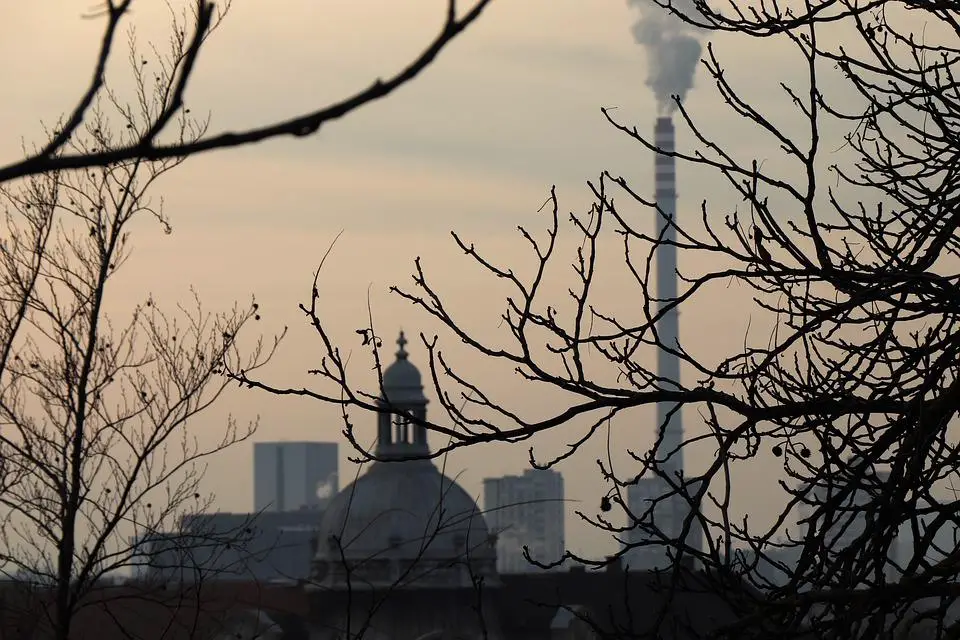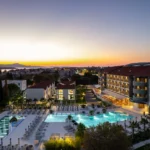As Poslovni Dnevnik/PD VL native tim writes, despite the fact that it bears a significant burden on the implementation of Croatian Government measures to limit the growth of energy and energy prices, HEP is continuing to develop its production portfolio in the current difficult energy situation with the aim of increasing the degree of energy self-sufficiency across the Republic of Croatia. One such investment is currently being implemented in the heart of the City of Zagreb.
With the completion of the construction of the new combi-cogeneration block worth a massive 900 million kuna at Elektrana-toplana Zagreb (KKE EL-TO Zagreb), almost 200,000 residents of the western part of the capital will have a long-term supply of thermal energy, and commercial consumers will have a supply of industrial steam.
The reduction of all pollution
The plan is to put KKE EL-TO Zagreb, with an electric power of 150 MWe and a thermal power of 114 MWt, into trial operation in the first half of next year. The construction of the block is already at an advanced stage and 85 percent of the planned works have been completed so far. Complete production equipment has been installed, and the block is already connected to the 110 kilovolt network, the high-pressure gas pipeline, as well as to most connection points with the EL-TO Zagreb plant.
The expected average annual production of KKE EL-TO Zagreb is 675 GWh of electricity, 450 GWh of thermal energy for the central heating system of the City of Zagreb, and 160 GWh of industrial steam.
The new KKE EL-TO block will, thanks to Siemens’ state-of-the-art combi-cogeneration technology, allow for the simultaneous production of electricity and thermal energy in the connection process, with a high degree of efficiency of 90 percent. It will achieve more than 25 percent of the primary energy savings of natural gas, which is extremely important as part of the European Union’s overall efforts to reduce the bloc’s dependence on manual gas as much and as quickly as possible.
In addition to all of the above, by replacing worn-out inefficient units at the location, the specific emissions of CO2 and pollutants in flue gases will also be significantly reduced. The turbines of the new block are designed for the possibility of subsequent use of alternative gas fuels, including hydrogen.
The new cogeneration block is being built by the Italian company FATA S.p.A., a member of the Danielli Group, with which the Agreement for the design, construction, procurement and installation of equipment and the Agreement on long-term maintenance of the power plant was signed. Croatian companies – Elektroprojekt, Inzenjering za naftu i gas and others – were all also hired to be engaged in various types of work.
A heat accumulator worth 100 million kuna was also constructed at the very same location, which will optimise the production of heat and electricity and help compensate for the increased consumption of heat energy. The heat accumulator will be put into operation during the upcoming heating season this year. The final works of the second season of the realisation of the revitalisation and modernisation project of one third, or 68.5 kilometers, of the hot water network of the City of Zagreb are also now firmly underway. The project is worth 700 million kuna in total was co-financed using EU funds.
The total value of the mentioned three projects with which HEP is working to increase the long-term security of the production and supply of electricity and thermal energy in the City of Zagreb amounts to approximately 1.7 billion kuna.
The construction of KKE EL-TO Zagreb is part of HEP’s wider Renewable Scenario, which will increase production capacity by an additional 1,500 MW from 2018 to 2030, of which 700 MW will come from solar power plants and wind power plants, 570 MW will come from hydropower plants, and 230 MW will come in the form of high-efficiency cogenerations.
The long-term orientation towards renewable energy sources is illustrated by the fact that HEP is currently developing about 60 RES projects with a total power of about 1,400 MW and a value of around 11 billion kuna in total.
For more, make sure to check out our dedicated business section.









